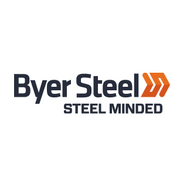What's The Difference Between Ferrous & Non-Ferrous Metals? Metal Recycling Experts Explain
By Byer Steel

When you’re recycling scrap metal, the price you get depends a great deal on the type of metal you’re bringing in. In many scrapyards, you’ll hear the terms “ferrous” and “nonferrous” metals, but do you know the difference? As Byer Steel Recycling, one of the most established recycling centers in Cincinnati, explains, the difference is rather elementary.
Essentially, all metal and alloys contain iron, while non-ferrous metals do not. The ferrous metals include any kind of steel, from carbon steel to cast iron, which are used in the construction of large buildings, long bridges, and massive machines all over the world, as well as most hardware and tools. Ferrous metals are vulnerable to rust, and most have magnetic properties due to their iron content. Moreover, these types of metal make up the bulk of what is recycled every year, with recycled materials being used to make up to 500 million tons of steel annually.
Non-ferrous metals, on the other hand, include aluminum, copper, bronze, nickel, zinc, and all the precious metals as well. They are commonly used for their malleability and light weight, especially in the aircraft and canning industries. These metals are resistant to corrosion, making them extremely valuable in a wide variety of applications. Although aluminum is one of the most commonly recycled metals, recycling prices of non-ferrous metals fluctuate widely because there isn’t a reliable, steady supply.
Visit Byer Steel Recycling online to learn more about this customer-oriented scrap metal company, or just call (513) 232-2274 now with any questions.
About the Business
Have a question? Ask the experts!
Send your question

